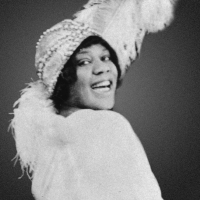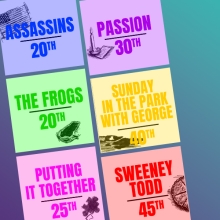The MTI office will close early at 1 PM ET on Friday, January 17th and remain closed through Monday, January 20th in observance of Martin Luther King Jr. Day. Office operations will resume on Tuesday, January 21st.
Bessie Smith

Bessie Smith (April 15, 1894 - September 26, 1937) was an early American blues singer born in Chattanooga, Tennessee. Initially hired as a dancer, she landed her first job with the Moses Stokes company, a show that also included Ma Rainey, who did not teach Bessie to sing but probably helped her develop a stage presence. Smith began developing her own act around 1913, at Atlanta's "81" Theatre and by 1920 she had gained a reputation in the South and along the Eastern Seaboard.
In 1923, when the blues trend started selling records, Bessie was signed by Columbia records, and quickly rose to stardom as a headliner on the T. O. B. A. (Theater Owners' Booking Association) theatre circuit. Her biggest recorded hit was "Down Hearted Blues", a song written and previously recorded by Alberta Hunter. Working a heavy theatre schedule during the winter months and doing tent tours for the rest of the year (traveling in her own railroad car), Bessie Smith became the highest-paid black entertainer of her day. Her recorded accompaniments included some of the finest musicians around, most notably Louis Armstrong, James P. Johnson, Joe Smith, Charlie Green, and Fletcher Henderson.
It has been said that Bessie's career was cut short by alcoholism, but the real cause was a combination of the Depression, which all but put the recording industry out of business, and the advent of talking pictures, which did Vaudeville in. Bessie, however, never stopped performing. While the days of elaborate shows were over, she continued touring and occasionally reverted to singing in clubs. In 1929, she appeared in a Broadway flop called PANSY, a musical in which, the top white critics agreed, she was the only asset. That same year, she made her only film appearance, starring in a two-reeler based on W. C. Handy's "St. Louis Blues." In the film, she sings the title song accompanied by members of Fletcher Henderson's orchestra, the Hall Johnson Choir, and a string section--a musical environment that is radically different from any found on her recordings.
Bessie was appearing in a Philadelphia night club in 1933 when John Hammond asked her to record four sides for the Okeh label. These were her final recordings and they are of particular interest because the accompanying band included such Swing Era musicians as Frankie Newton and Chu Berry. Even Benny Goodman, who happened to be recording in the adjoining studio, dropped by for an almost inaudible guest visit. Hammond was not pleased with the result, preferring to have Bessie back in her old blues groove, but "Take Me For A Buggy Ride" and "Gimme a Pigfoot", are among her most popular recordings.
She resumed touring with some success, adding swing to her repertoire, and continued until her death in a road accident while travelling from a concert in Memphis to Clarksdale, Mississippi along United States Highway 61. She was in a car driven by her companion (and Lionel Hampton's uncle) Richard Morgan. They were in an accident and Smith was severely injured. A doctor soon arrived at the scene and summoned an ambulance. She was taken to Clarksdale's Afro-Hospital and her arm was amputated, but she never regained consciousness and died that morning.
Shortly after her death, John Hammond stirred up controversy by suggesting, in a Down Beat article, that Bessie was refused admittance to a white hospital and that she died as a consequence thereof. It was an unsubstantiated rumour that lingered for decades, fuelled by Edward Albee's 1959 play THE DEATH OF BESSIE SMITH. Although made aware of the facts, and shown the evidence, Hammond never recanted his story. It was only when biographer Chris Albertson's 1972 book BESSIE featured an interview with the attending doctor, Hugh Smith, that the story was put to rest, although, surprisingly given the eminence of the author, it was repeated as fact in Alan Lomax's 1993 book THE LAND WHERE BLUES BEGAN:
They had heard about what happened to Bessie Smith in 1937 in their hometown. Wounded in a local car wreck, the great blues singer was refused admission to three Clarksdale hospitals because she was black. In the end she bled to death without medical attention, while her friends pled with the hospital authorities to admit her. And this incident was typical of the Deep South.
Even though Lomax, a white Texan, had indeed seen Southern racism at first hand in the course of his dealings with black artists, his claim that such a scenario was "typical" is difficult to believe. As the (white) doctor who tended to Bessie on the scene reported (quoted in Chris Albertson's book), it is extremely unlikely that a black ambulance-driver would have taken a black patient to a white hospital. The ambulanceman in question confirmed, twenty years later, that he had taken Bessie straight to Clarksdale's black hospital, and that she had died en route, rather than by bleeding slowly to death on a stretcher while waiting to be admitted, as legend has it.
Artistic legacy
A more recent play featuring 14 of the songs Smith made famous, The Devil's Music: The Life and Blues of Bessie Smith by Angelo Parra, was named one of the "top-10 Off-Broadway experiences" of 2001 by the New York Daily News.
The impact of Bessie Smith on other singers has been substantial, including influences acknowledged by Billie Holiday, Mahalia Jackson, and Janis Joplin. In 1970, when it was discovered that Bessie's grave remained unmarked, Joplin offered to pay for a stone and ended up sharing the cost with Juanita Green, who said that she owed her successful non-singing career to Bessie Smith. "I was a little girl in a talent contest at the Standard Theatre," Mrs. Green told Albertson, "and when I came off stage, Bessie was standing in the wings. She asked me if I was in school, and when I nodded, she said, 'You better stay there, 'cause you can't sing.' It was good advice."
From Wikipedia, the free Encyclopedia.




